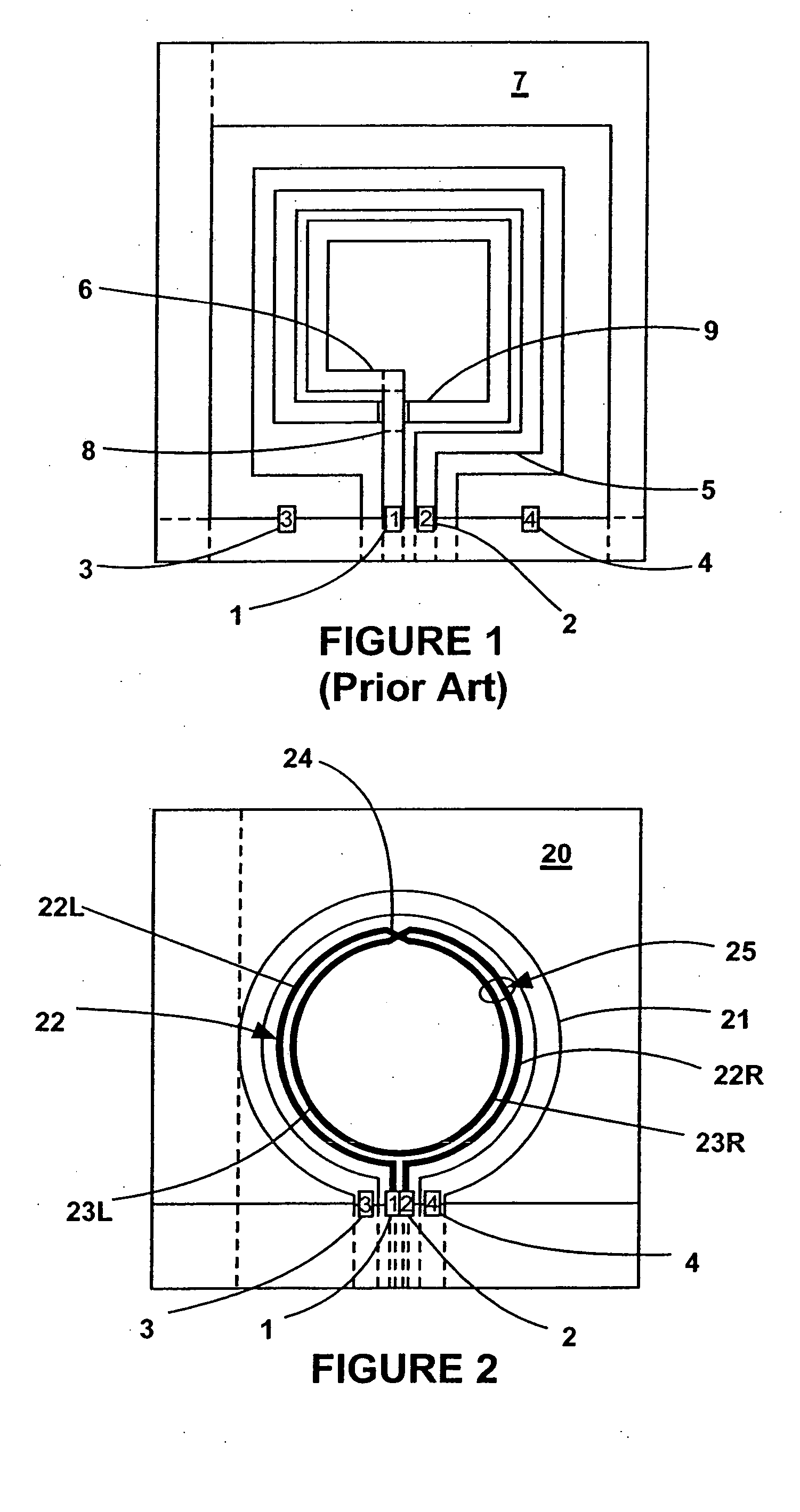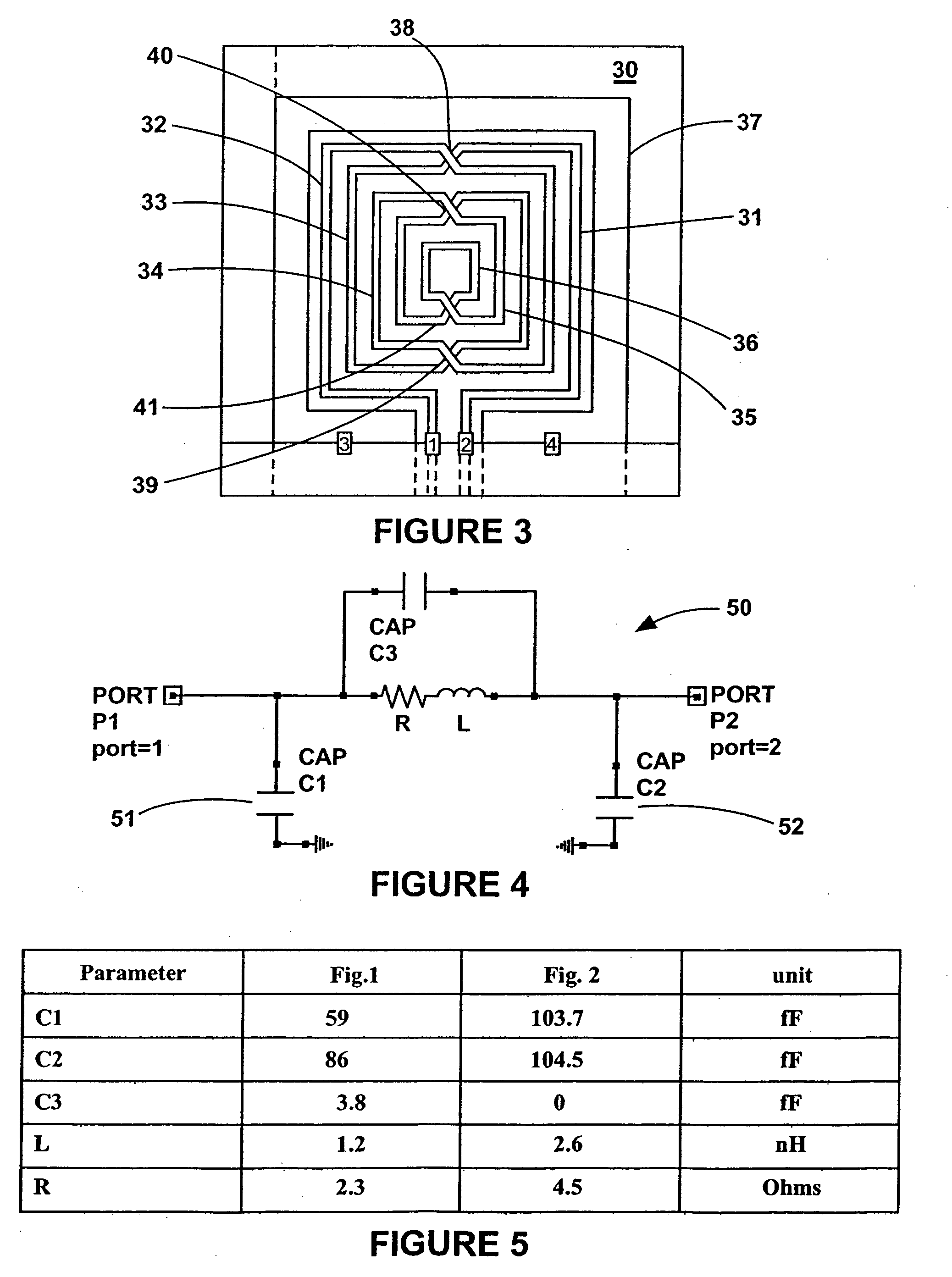Symmetric planar inductor
a planar inductor and symmetry technology, applied in the field of symmetric inductors, can solve the problems of increasing the a adding undesired capacitive coupling, and degrading the signal quality, so as to preserve the symmetry of the inductor, reduce the capacitive effects of conductor crossover, and reduce the effect of the capacitive
- Summary
- Abstract
- Description
- Claims
- Application Information
AI Technical Summary
Benefits of technology
Problems solved by technology
Method used
Image
Examples
Embodiment Construction
[0014] Referring to FIG. 2, a planar symmetric inductor 20 in accordance with an embodiment of the present invention is shown. A planar inductor is an inductor whose plurality of windings preferably occupy a common plane except for the cross-over or cross-under points. The inductor 20 can be connected to other components of a circuit by terminal 1 and terminal 2, while terminal 3 and terminal 4 are ground terminals. The inductor 20 comprises an inductor winding 25 made of a conductive material, the winding 25 including concentric outer circular winding 22 and inner circular winding 23. The inductor 20 also comprises a circular peripheral conductor 21 which forms a ground plane that terminates the electric fields and makes the inductor 20 a guided wave structure. The circular peripheral conductor 21 is concentric with circular windings 22 and 23 and has diameter greater than that of circular windings 22 and 23. As shown in FIG. 2, peripheral conductor 21 is preferably disposed at the...
PUM
 Login to View More
Login to View More Abstract
Description
Claims
Application Information
 Login to View More
Login to View More - R&D
- Intellectual Property
- Life Sciences
- Materials
- Tech Scout
- Unparalleled Data Quality
- Higher Quality Content
- 60% Fewer Hallucinations
Browse by: Latest US Patents, China's latest patents, Technical Efficacy Thesaurus, Application Domain, Technology Topic, Popular Technical Reports.
© 2025 PatSnap. All rights reserved.Legal|Privacy policy|Modern Slavery Act Transparency Statement|Sitemap|About US| Contact US: help@patsnap.com



